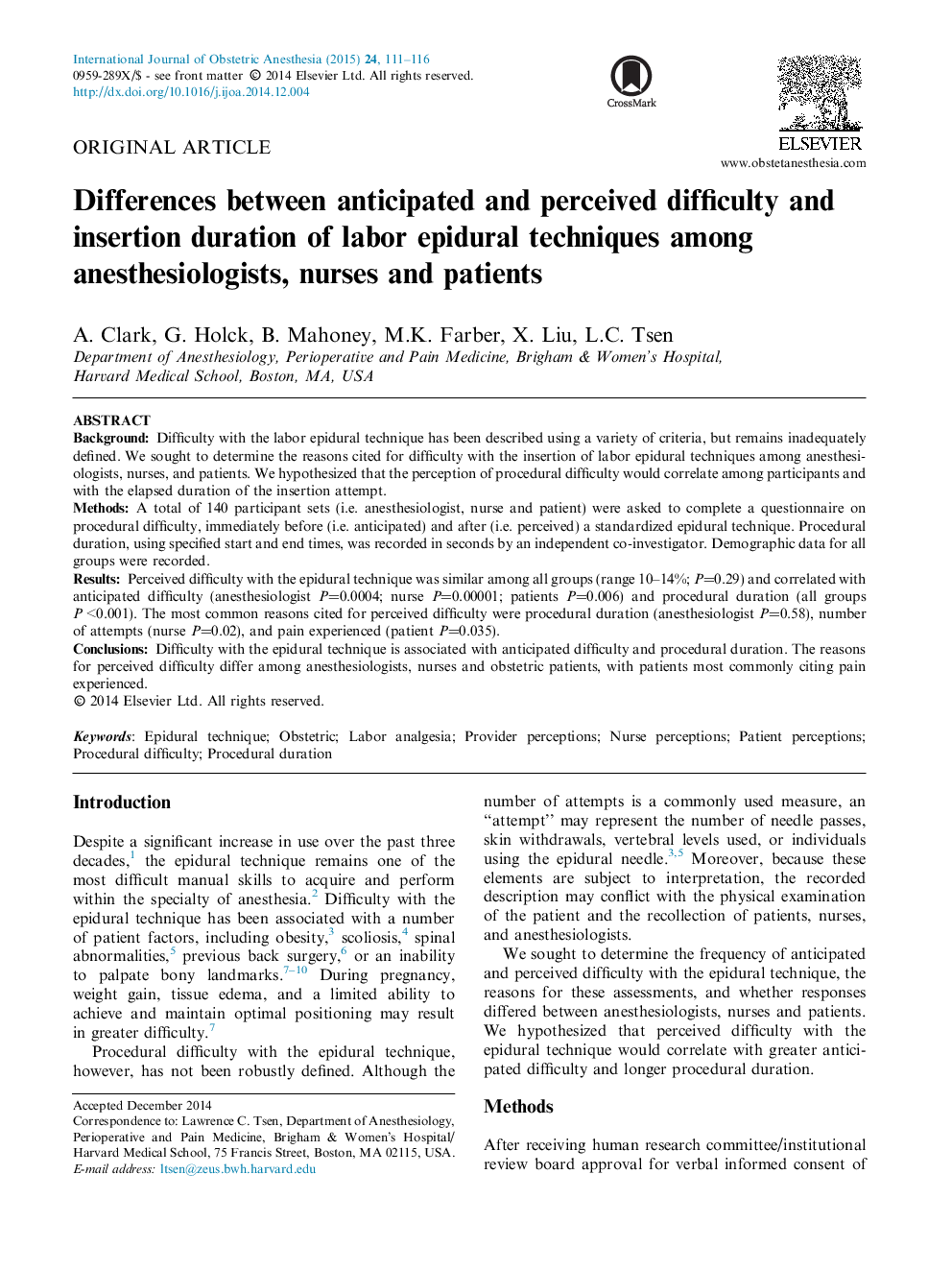| کد مقاله | کد نشریه | سال انتشار | مقاله انگلیسی | نسخه تمام متن |
|---|---|---|---|---|
| 2757579 | 1567514 | 2015 | 6 صفحه PDF | دانلود رایگان |
• Providers and patients likely define a “difficult” labor epidural technique differently.
• A questionnaire was completed before and after an epidural.
• Perceived difficulty was correlated with anticipated difficulty.
• Perceived difficulty was correlated with longer actual duration.
• Pain was the most common reason for perceived difficulty among patients.
BackgroundDifficulty with the labor epidural technique has been described using a variety of criteria, but remains inadequately defined. We sought to determine the reasons cited for difficulty with the insertion of labor epidural techniques among anesthesiologists, nurses, and patients. We hypothesized that the perception of procedural difficulty would correlate among participants and with the elapsed duration of the insertion attempt.MethodsA total of 140 participant sets (i.e. anesthesiologist, nurse and patient) were asked to complete a questionnaire on procedural difficulty, immediately before (i.e. anticipated) and after (i.e. perceived) a standardized epidural technique. Procedural duration, using specified start and end times, was recorded in seconds by an independent co-investigator. Demographic data for all groups were recorded.ResultsPerceived difficulty with the epidural technique was similar among all groups (range 10–14%; P=0.29) and correlated with anticipated difficulty (anesthesiologist P=0.0004; nurse P=0.00001; patients P=0.006) and procedural duration (all groups P <0.001). The most common reasons cited for perceived difficulty were procedural duration (anesthesiologist P=0.58), number of attempts (nurse P=0.02), and pain experienced (patient P=0.035).ConclusionsDifficulty with the epidural technique is associated with anticipated difficulty and procedural duration. The reasons for perceived difficulty differ among anesthesiologists, nurses and obstetric patients, with patients most commonly citing pain experienced.
Journal: International Journal of Obstetric Anesthesia - Volume 24, Issue 2, May 2015, Pages 111–116
